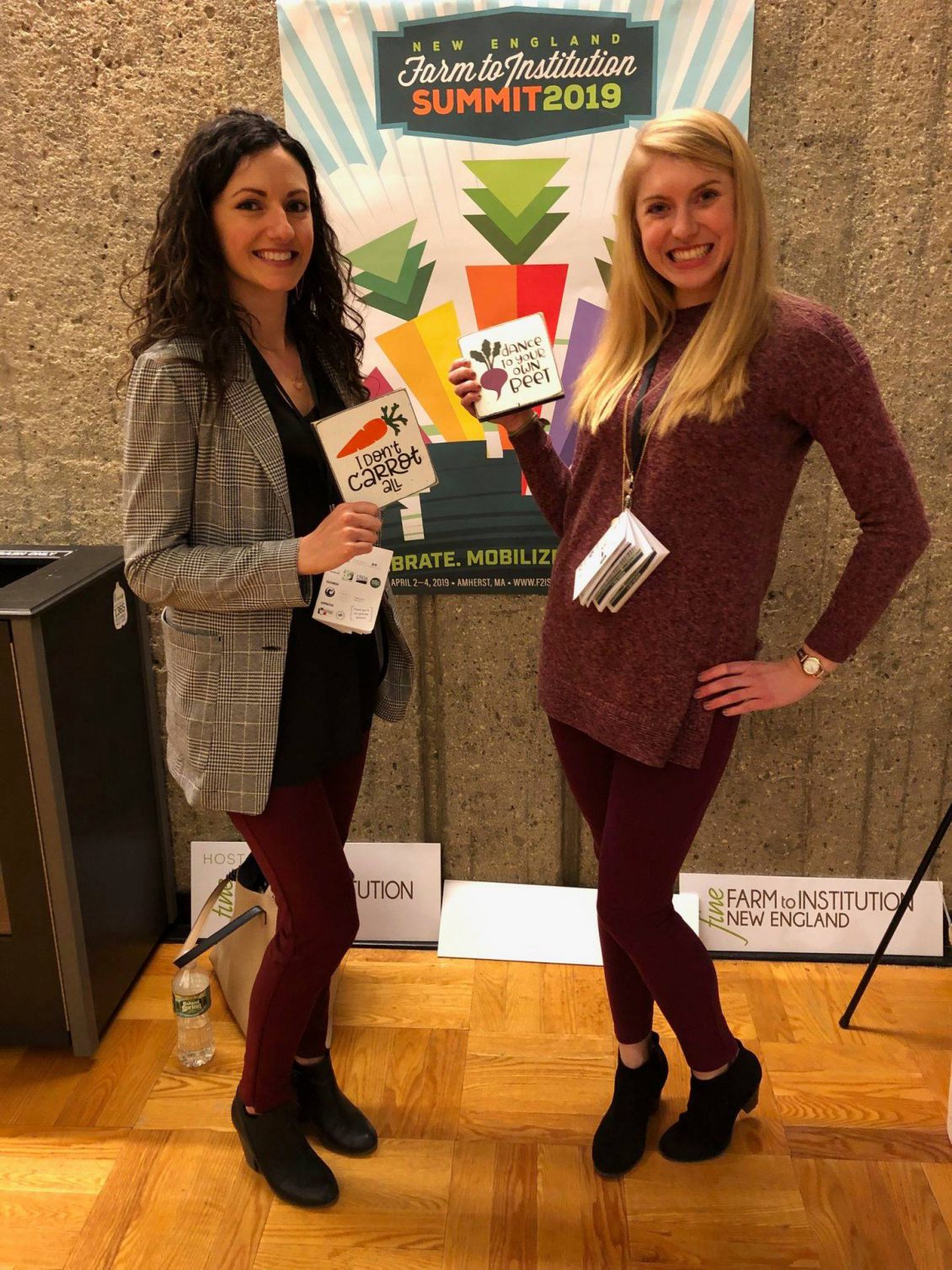BNMC’s Healthy Communities team attended the New England Farm to Institution Summit in Amherst, Mass. earlier this month to share how we’re creating a culture of health on the Medical Campus, and learn about other farm-to-institution programs across the country. We are excited to wp-contently some of these concepts to our own Farm-to-Hospital program here in Buffalo!
Congrats to R. Russ from Kaleida Health for winning the first $50 gift card to Homegrown Kitchen! There’s still time to complete the survey – share your thoughts with us today.
Here are some take-aways from Beth Machnica, our Healthy Communities Catalyst:
New England Farm to Institution Summit 2019: 5 Takeaways
There were many great lessons to be learned from attendees, presenters, exhibitors and others who participated in the 2019 New England Farm to Institution Summit. The Summit was held at University of Massachusetts in Amherst, MA, where they are making strides in offering local, sustainable food. While we are highlighting our 5 takeaways below, there was one theme that came up often throughout the Summit – equity. We often forget about the people throughout the entire food system who make everything possible – from the people growing our food and caring for the land – to those processing our food, fishing our seas, moving the food to our stores and institutions, and serving the food in hospitals, schools, prisons and restaurants. We heard from Jose Oliva, the co-Director of the Food Chain Workers Alliance. According to Jose, there are over 20 million food chain employees, making it the largest employer, and unfortunately, they are some of the lowest paying jobs and in hazardous working conditions. While we consider all the other takeaways, working towards an equitable food system is something that we all need to challenge ourselves to work towards.
1. Invite farmers to campus cafeterias.
A best practice for any farm to institution project includes bringing the farmers, growers, and fishermen right to where the food is served. It links consumers eating the food with the individuals who handpicked it, connecting people with the food system and the person that grew the food on their plate. This can also be done on a regular basis through marketing materials highlighting specific farms, and telling stories of specific farmers and families. Coordinating field trips is great to build the link with staff and students, but bringing the farmer to campus allows many more to make the connection.
2. Hospitals have a lot to learn from prisons and jails.
Among the schools, hospitals, and universities attending this Farm to Institution conference were also prisons and jails. For correctional facilities involved in the farm to institution movement the benefits are greater than just supporting local farmers, the ag economy, and providing healthier foods: it’s about transformative healing. State prisons engage inmates in gardening, nutrition classes, food preparation, eating healthy on a low budget, and composting. These initiatives have a far greater purpose than simply promoting health or teaching in-demand job skills. They build self-efficacy, empowerment, and promote mental and emotional wellbeing among inmates. These initiatives can easily be translated into a clinical setting to promote healing and well-being among patients and caretakers.
3. Healthcare needs to take on an advocacy role in food policy.
Our Healthy Communities team learned how policy influences much more than just food safety in institutional settings. The Food Safety Modernization Act, a federal law, incentivizes local sourcing within 400 miles and promotes food chain transparency, both of which are goals for the Farm to Hospital Initiative that BNMC is leading locally. This law supports BNMC institutions in increasing their procurement of local food. It also demonstrates the critical position hospitals hold in influencing systems change through food policy to align with health and well-being programs.
4. Define “Local”.
Having a definition of what local means is essential to a successful farm to institution program. Does local mean within state boundaries? Within 250 miles? Within the 8 counties of Western New York? Having a set standard creates boundaries that will determine the rest of the project scope – what farmers are available to work with in the radius, what current distribution networks exit within the boundary, and if there is enough local volume of a variety of products to meet the demand. Looking beyond geography is important as well. Including local impact in your definition and assessment includes the WHY. Why are we focused on local? We want to impact our local economy, including local agriculture, and business.
5. We Learned about Hyper-Local Seafood.
Being located in New England, naturally the food served at the conference included seafood. What made it interesting was having lunch with the fisherman who caught the seafood we were eating and also learning about the local fishery economy in New England specifically. The type of fish the fishermen specialize in is dogfish, which is overabundant in New England yet Americans traditionally don’t eat because of its off-putting name. As a result, the majority of dogfish gets exported to Europe, and this utilizes more resources, is less environmentally sustainable, and the fishermen don’t know who the end-consumer is. When institutions in New England purchase the dogfish in the form of a breaded fish fillet to serve in hospitals, universities, and prisons, fishermen earn a fairer portion of the dollar for their work, it is more efficient, and the fishermen know who is eating their food.

